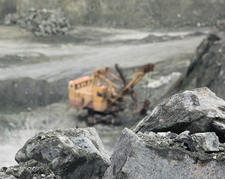In her lawsuit, the plaintiff claims that her mesothelioma cancer diagnosis was caused by the defendant, Colgate Palmolive, manufacturing talcum powder contaminated with asbestos fibers from the mine where the mineral came from. The case is one of several talcum powder asbestos cancer lawsuits filed by victims across the country, arguing that their diagnosis was caused by carcinogenic cosmetic products manufactured by Colgate Palmolive.
For their part, the defendant’s attorneys asserted that employment records at Naval Support Activity, Mechanicsburg, Pennsylvania showed good enough cause to have the case removed from Allegany County and transferred to Mechanicsburg County Court. As is common in many asbestos cancer lawsuits, the defendants appear to have attempted to blame the plaintiff’s condition on another party, despite any evidence showing so. Fortunately, the judge hearing the case rejected the defendant’s motions and kept the litigation process moving in court.
 Asbestos & Mesothelioma Law Blog
Asbestos & Mesothelioma Law Blog






